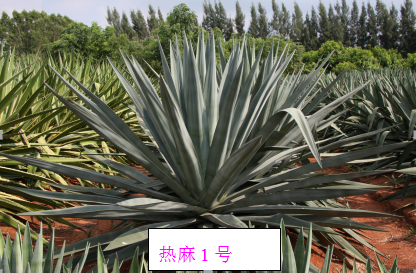The sisal breeding research team of south subtropical crops research institute was setup in the 1960s initially. At present the team has 9 members, including 4 senior professional titles or PhD, 4 intermediate title or master, and has 8 ha sisal breeding field. The sisal team has been conducting in-depth researches on sisal germplasm resources collection, preservation and their uses in breeding programme for new variety, on sisal physiology and on highly effective production technology. The team established the agave germplasm resources garden, where they preserve more than 100 germplasm accessions of 24 species from 6, and has carried out identifying and genetic diversity analysis of 80 agave germplasm accessions by using ISSR molecular marker technique. The team was responsible to formulate “The Sisal Development Plan in Prime Area ” and “Sisal Cultivation Labor” on professional standard. In recent years, the team has established “Sisal Germplasm Description Record Standard”, “Sisal Germplasm Resources Data Quality Control Standard” and “Sisal Germplasm Resources Diversity Map”, “Technical code for evaluating germplasm resource—Agave”, “Technical specification for identification of resistance to agave disease”, “Technical code for propagation of sisal seedlings”. The team was also responsible to compile “the practical technology of sisal cultivation”, which belonging to Tropical agriculture "going out" practical technology series, “Agave breeding” and “Sisal Cultivation Labor” on professional standard.
New variety- Rema No1
Rema No1 was obtained by south subtropical crops research institute from a cross between H.11648 xA. sisalanaPerrine and back-cross with H.11648. Rema No1 has some unique morphological characters, such as higher plant height, thicker leaf base, gray green leaf, and the leaves lack marginal spines. Its leaf is 130 to 140 cm in length and 14 to 15cm in width. The weight per leaf is 0.8 to 0.9 Kg. The life cycle is range from 6 to 9 years. In the whole life cycle, it grows 360 to 400 leaves in total, and grows 45 to 55 leaves per year. The leaves contain about 4% fibers. The fiber is white and thin and even. It grows well and has high leaves yield. Due to the fact that the leaves are rich in saponins, it has the prospect of comprehensive utilization. In the field experiment, it had high-resistance of zebra strip disease, low temperature and drought. So Rema No1 is fit for replanting or planting in the area of zebra strip disease.
New variety- Rema No1
Rema No1 was obtained by south subtropical crops research institute from a cross between H.11648 xA. sisalanaPerrine and back-cross with H.11648. Rema No1 has some unique morphological characters, such as higher plant height, thicker leaf base, gray green leaf, and the leaves lack marginal spines. Its leaf is 130 to 140 cm in length and 14 to 15cm in width. The weight per leaf is 0.8 to 0.9 Kg. The life cycle is range from 6 to 9 years. In the whole life cycle, it grows 360 to 400 leaves in total, and grows 45 to 55 leaves per year. The leaves contain about 4% fibers. The fiber is white and thin and even. It grows well and has high leaves yield. Due to the fact that the leaves are rich in saponins, it has the prospect of comprehensive utilization. In the field experiment, it had high-resistance of zebra strip disease, low temperature and drought. So Rema No1 is fit for replanting or planting in the area of zebra strip disease.



